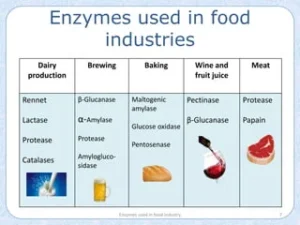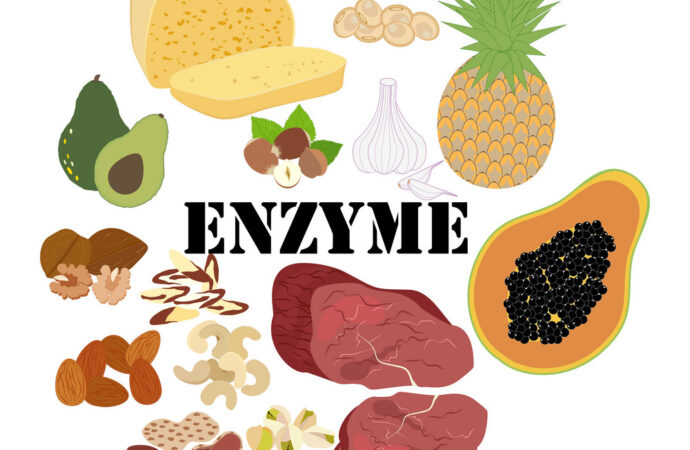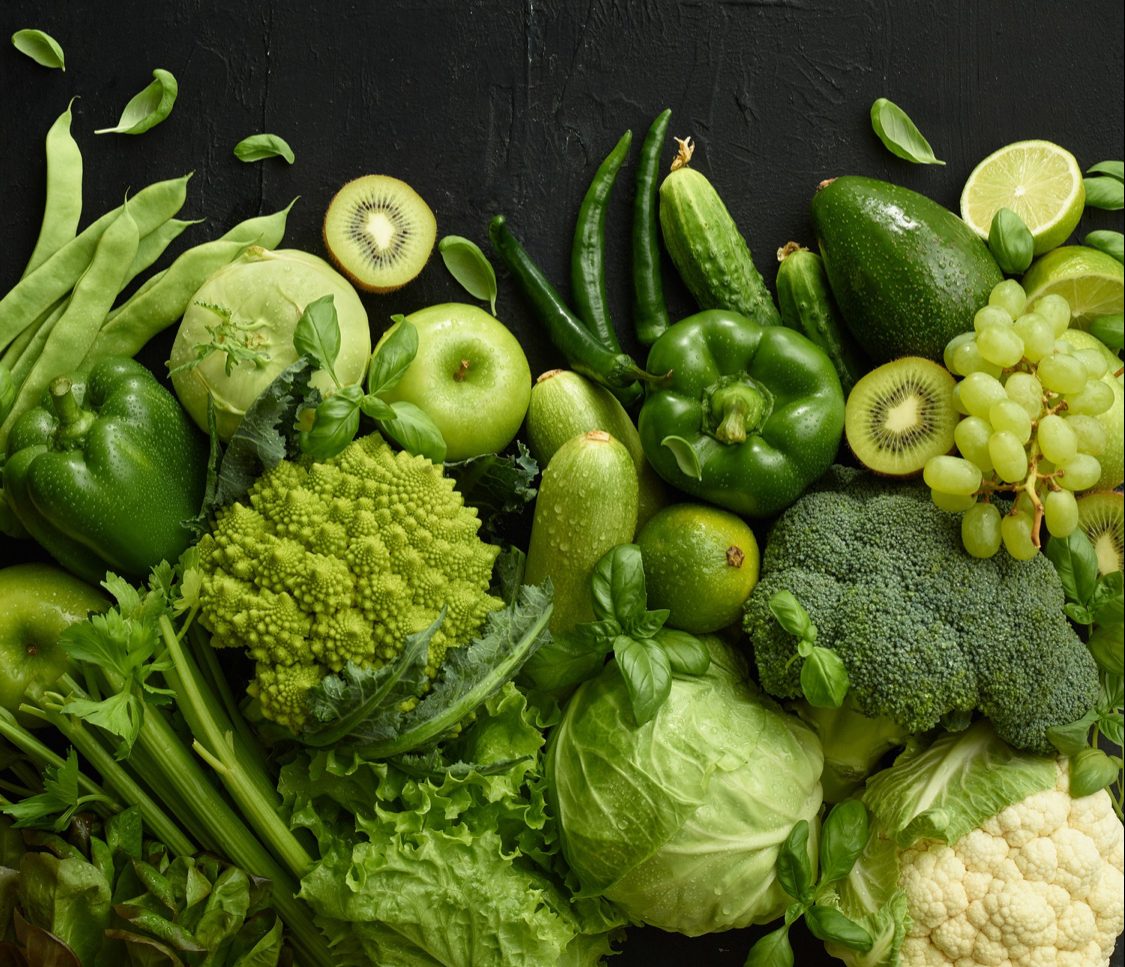Enzymes are nature’s catalysts that play an essential role in transforming food. These biological molecules simplify, enhance, and preserve food products, improving their quality, taste, nutritional value, and shelf life. From dairy to beverages, enzymes are key to breaking down complex molecules, enhancing textures, and unlocking hidden nutrients, making food both more accessible and enjoyable. In modern food production, enzymes not only improve the efficiency of processing but also help create healthier, more sustainable products, benefiting both consumers and manufacturers alike.
How Enzymes Transform Our Food
Enzymes are key agents of transformation in food. They simplify, enhance, and preserve food products, enabling us to enjoy better quality and nutritional value. Here are some of the main ways enzymes work in our food.
- Breaking Down Complex Molecules
Enzymes simplify complex food molecules into easily digestible forms. For example, lactase breaks down lactose in milk into glucose and galactose, allowing lactose-intolerant individuals to consume dairy without discomfort. Similarly, amylases convert starches into simple sugars, improving the sweetness and usability of food products.
- Enhancing Texture and Taste
Enzymes contribute to the texture and flavour of food. Proteases and amylases improve dough elasticity and softness, leading to fluffy bread with a desirable texture. In cheese-making, enzymes like rennet coagulate milk proteins to form curds, influencing the texture and flavour profile of the final product.
- Improving Nutritional Value
Enzymes unlock hidden nutritional potential in food. They convert raw materials into bioavailable forms, as seen with phytase, which breaks down phytates in grains to release essential minerals like iron and zinc. This process enhances the nutritional quality of food and supports better health outcomes.
- Extending Shelf Life
Enzymes help preserve freshness and delay spoilage. In baked goods, xylanases and lipases prevent staling, ensuring bread remains soft for longer. These innovations not only reduce food waste but also provide consumers with high-quality products over extended periods.
- Supporting Food Safety and Clarity
Enzymes enhance food safety by breaking down potentially harmful substances. For instance, pectinases clarify fruit juices, removing cloudiness and improving taste. Enzymes also play a role in brewing by ensuring consistent quality and removing unwanted haze from beverages.
Examples of Enzyme Applications in Food

The applications of enzymes in food go far beyond basic processing. Each type of enzyme offers a unique benefit that improves specific food products. Here are some notable examples:
- Dairy Products
Enzymes transform dairy products, enabling innovations like lactose-free milk and a wide variety of cheeses. Lactase ensures dairy becomes accessible to lactose-intolerant individuals, while Rennet produces high-quality cheese with precise texture and flavour control.
- Beverages
Brewing and juice processing rely on enzymes like amylases and pectinases. These enzymes improve clarity, enhance fermentation, and optimize sweetness, delivering beverages with consistent quality and better consumer appeal.
- Meat Tenderization
Proteolytic enzymes such as papain and bromelain break down tough muscle fibres, making meat tender and easier to cook. This not only enhances taste but also reduces waste by allowing tougher cuts of meat to be used effectively.
- Sweetener Production
Amylases and glucose isomerase convert starches into sweeteners like high-fructose corn syrup (HFCS). These enzymatic processes ensure the efficient production of sweeteners widely used in beverages, desserts, and processed foods.
- Oil and Fat Processing
Lipases modify fats to create healthier or more functional oils. These enzymes help produce low-trans-fat alternatives and structured lipids, addressing consumer demand for healthier dietary options.
Benefits of Enzyme Use in Food
The use of enzymes provides a wide range of benefits that make them indispensable in the food industry. By focusing on precision, sustainability, and quality, enzymes offer advantages that transform food processing.
- Precision and Specificity: Enzymes target specific molecules, leading to consistent and high-quality outcomes. Their targeted action minimizes unwanted by-products and maximizes efficiency.
- Environmental Sustainability: By operating under mild conditions, enzymes reduce the energy needed for food processing. Their eco-friendly nature aligns with global goals for sustainable production.
- Improved Food Quality: Enzymes enhance the taste, texture, and nutritional value of food, catering to consumer expectations for premium products.
- Economic Efficiency: By streamlining production processes and increasing yields, enzymes lower costs for manufacturers, making them economically attractive.
Challenges in Enzyme Use
Despite their benefits, enzymes present challenges that require careful attention and innovation. Overcoming these obstacles ensures enzymes can be used effectively in food processing.
- Stability Concerns: Enzymes can lose activity when exposed to extreme temperatures or pH levels. Manufacturers invest heavily in enzyme engineering to improve their robustness.
- Regulatory Compliance: Ensuring enzymes meet safety standards and regulations requires extensive testing and documentation, adding complexity to their adoption.
- Consumer Perception: Some consumers remain wary of enzymatic processes, associating them with artificial interventions. Educating consumers about the natural origins and safety of enzymes can address these concerns.
Conclusion
Despite their significant benefits, enzymes face challenges like stability issues, regulatory complexities, and consumer skepticism. However, innovation in enzyme engineering and education about their natural origins can overcome these barriers. By addressing these challenges, we can ensure that enzymes continue to revolutionize food production, making it more efficient, sustainable, and nutritious for the future.
 Food Manifest
Food Manifest 


















